Smoke Detector Market is estimated to be worth USD 2.82 Billion in 2024 and is projected to grow at a CAGR of 8% between 2024 to 2032.
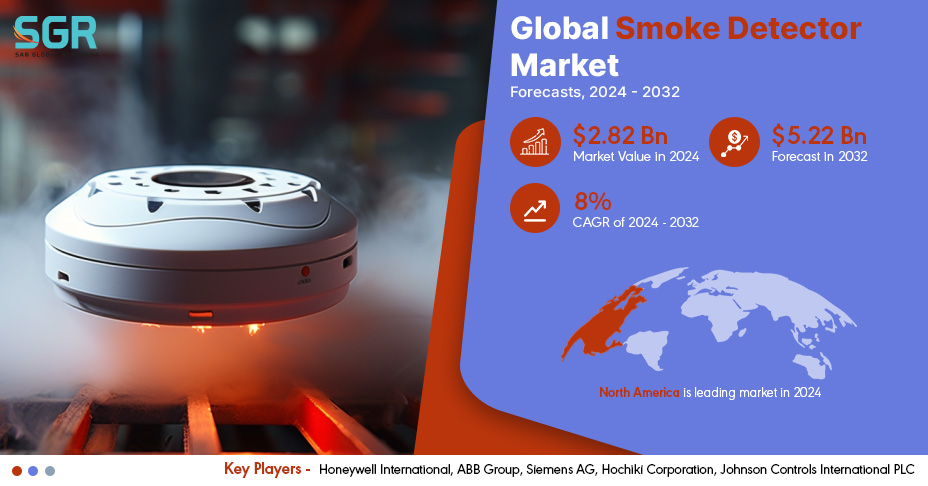
The study has considered the base year as 2023, which estimates the market size of the market, and the forecast period is 2024 to 2032. The report analyses and forecasts the market size, in terms of value (USD Billion), for the market. The report segments the market and forecasts it by Power Source, by Type, by Application and by region/country.

The Smoke detector can be defined as a device that is able to sense smoke typically as an indicator of fire. These detectors are basically works on the principal of optical detections or on ionization and for increased sensitivity for smoke detection both the methods are used. These smoke detectors are also used to detect smokers in the public places by the smoke released by the cigarettes. However, these smoke detectors in large commercial, residential and industrial are usually connected by a central fire alarm system. Within these smoke detectors there is a preinstalled sensor called MQ2 analog gas sensor which helps in smoke detection.

This sensor can detect various gases like i-butane, LPG, propane, methane, alcohol, and hydrogen, along with smoke. When the sensor detects smoke, it sends a signal to the Arduino. The Arduino program then recognizes the smoke and triggers a buzzer to alert of potential danger. These detectors generally come in a disc-shaped plastic enclosure and they are typically around 150 mm in diameter and 25 mm thick.
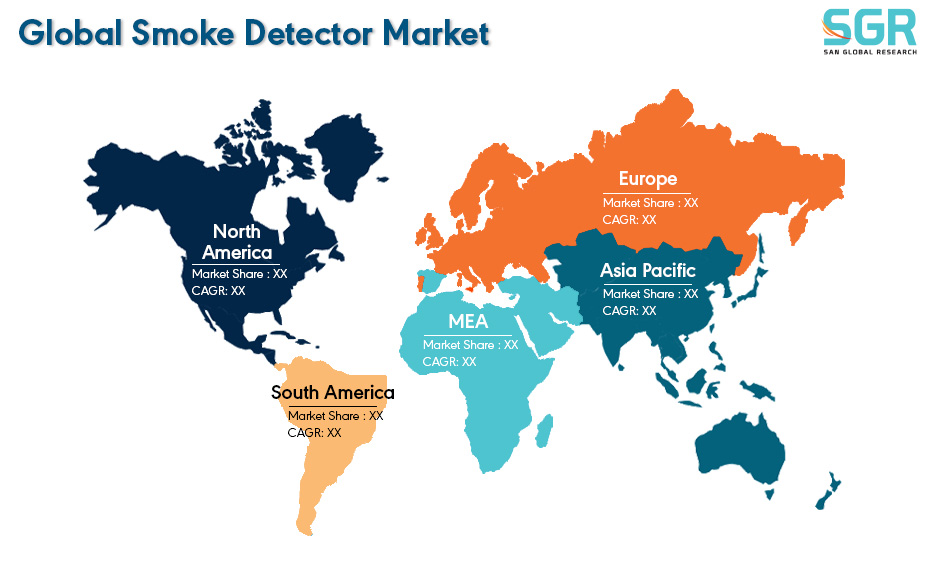
After reviewing the data shown below, it can be determined that the North America region dominates the Smoke Detector Market for the following reasons.
About 2000 people in United States lose their lives every year due to residential fires. In a fire, smoke and deadly gases spread faster and farther than heat, making smoke inhalation a leading cause of fire fatalities rather than burns. About two third of the home fire death occurs in residential areas or homes with no smoke alarms or no working smoke alarms. Properly installed and maintained smoke alarms are considered to be one of the best and least expensive means of providing a prior warning of a fire and could reduce the risk of dying young by half which is significantly making the North America a dominant player within the Smoke Detector Market.
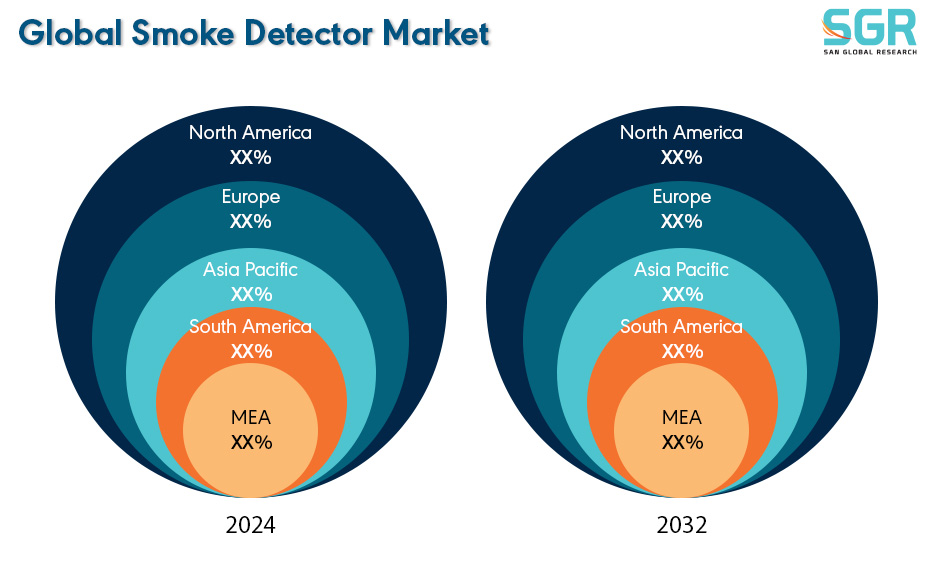
Segmentations
By Power Source
Based on Power Source, the Smoke Detector Market is bifurcated into Hardwired and Battery Powered– where Battery Powered segment is dominating and ahead in terms of share.
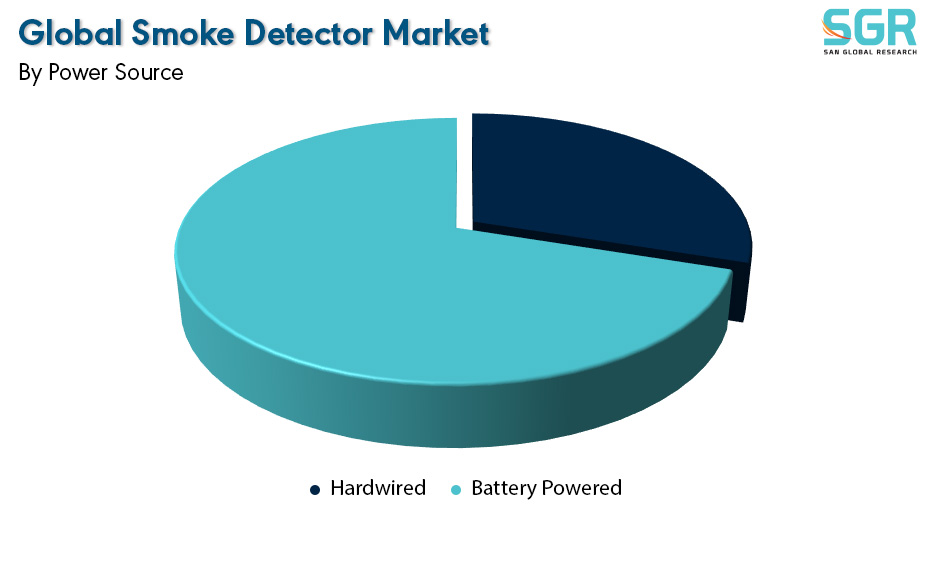
By Type
Based on Type, the Smoke Detector Market is bifurcated into Ionization Smoke Detectors, Photoelectric Smoke Detectors, Dual Smoke Detectors, Beam Smoke Detectors and Others– where Dual Smoke Detectors segment is dominating and ahead in terms of share. The dual smoke detectors in terms of other smoke detectors has a broader fire detection. It basically combines both the photoelectric technologies and ionization technology. Where the ionization tech excels at detection of flaming fire while photoelectric sensors are suitable for the detection of the smouldering fires caused by electrical malfunctions with both these technologies combined within one smoke detector makes it a suitable option in every application due to which the Dual Smoke Detectors dominate within the Smoke Detector Market substantially.
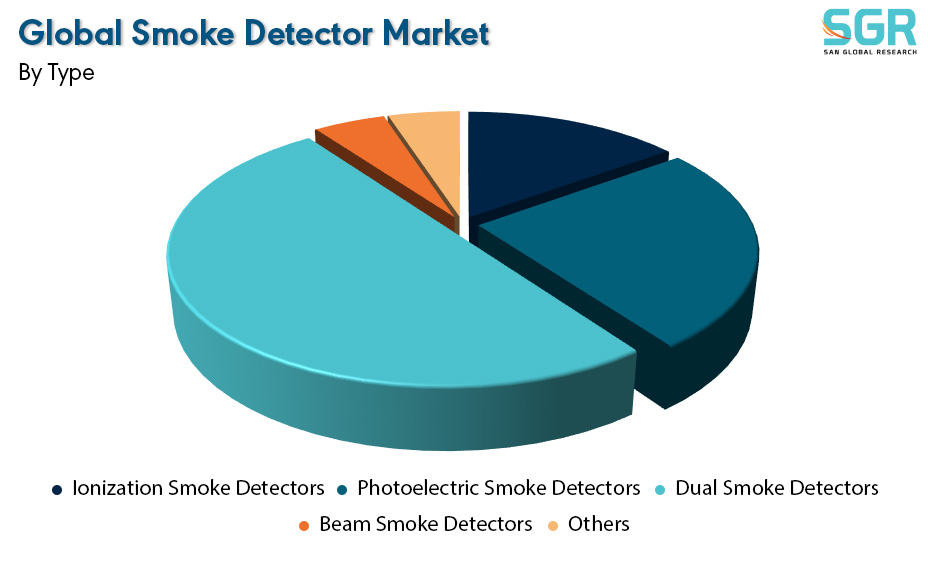
By Application
Based on Application, the Smoke Detector Market is bifurcated into Residential, Commercial, Industrial and Others– where Residential segment is dominating and ahead in terms of share.
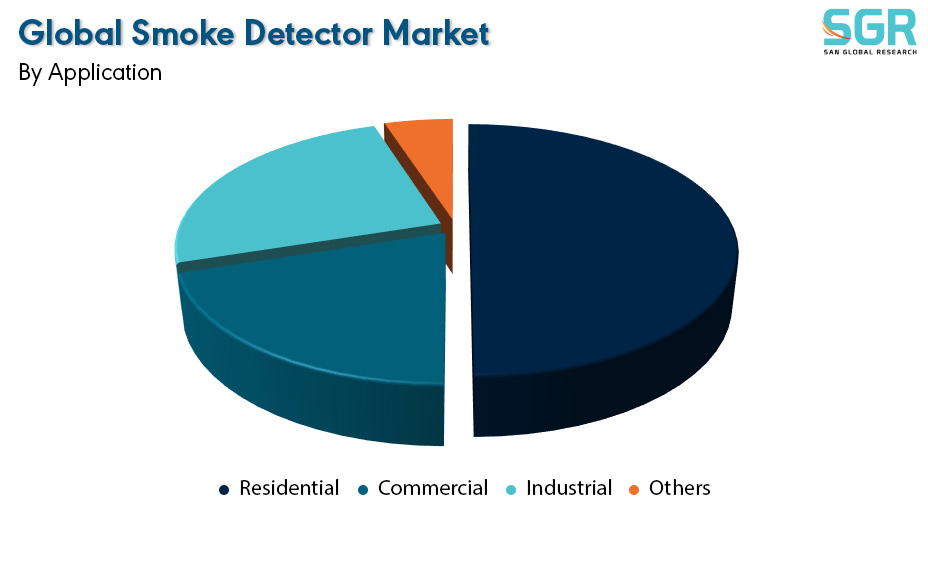
Key Players
• Honeywell International
• ABB Group
• Siemens AG
• Hochiki Corporation
• Johnson Controls International PLC
Drivers
Rising Concerns about Wildfire and Residential Fires
Due to increasing wildfires in many areas of the United States and Canada between the months of August and November has significantly propelled the Smoke Detector Market substantially. In 2020 it was a record setting season for the states of California and United States as a whole that as of November 27 there were 52,113 wildfires that had burned 88,889,297 acres in 2020. Due to such wildfires it can also stretch to residential areas which is also a major concern. Finally, due to the rising fire accidence within the residential areas due to electrical circuit malfunction are also a major market growth driver.
Opportunity
Technological Advancements
Within the last decade, there have been significant advances in sensors, microelectronics, and information technologies, as well as a greater understanding of fire physics. Various fire detection technologies and concepts have been developed over the last decade. For instance, various techniques are now available for measuring almost any stable gaseous species produced prior to or during combustion. The distributed fibre optical temperature sensors have been introduced to provide fire protection for application with the difficult ambient conditions, like tunnels, underground railway and stations. Multiple fire signatures (smoke, heat, CO) detected by sensors are processed simultaneously through intelligent algorithms, enabling discrimination between fires and non-threatening conditions. Additionally, integration with building service systems reduces false alarms, speeds evacuation, and assists firefighting.
| Report Attribute | Detail |
| Market Value in 2024 | 2.82 Billion |
| Forecast in 2032 | 5.22 Billion |
| CAGR | CAGR of 8% from 2024 to 2032 |
| Base Year of forecast | 2023 |
| Historical | 2019-2022 |
| Units | Revenue in USD Million and CAGR from 2024 to 2032 |
| Report Coverage | Revenue forecast, Industry outlook, Competitive Landscape, Growth Factors, and Trends |
| Segments Scope | By Power Source, By Type, By Application |
| Regions Covered | North America, Europe, Asia Pacific, SA and MEA |
| Key Companies profiled | • Honeywell International • ABB Group • Siemens AG • Hochiki Corporation • Johnson Controls International PLC |

 Description
Description
 Table of Content
Table of Content
 Gera Imperium Rise,
Gera Imperium Rise,  +91 9209275355
+91 9209275355


